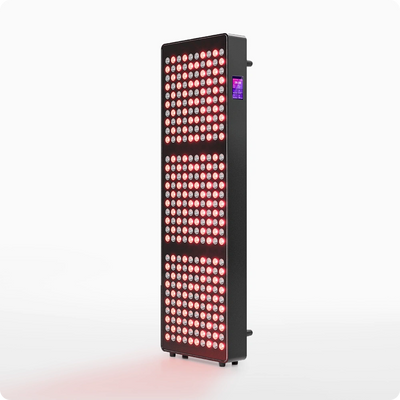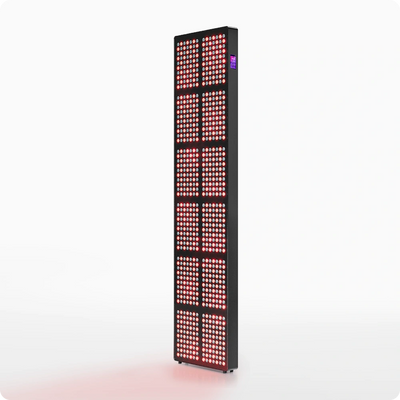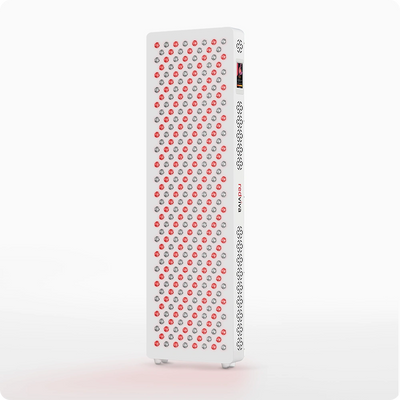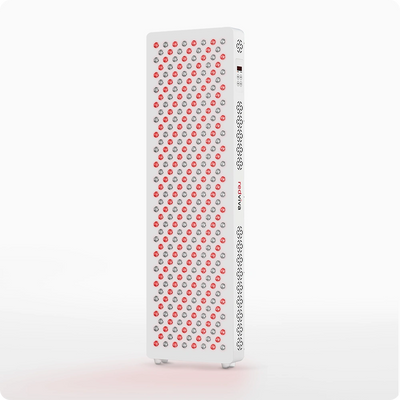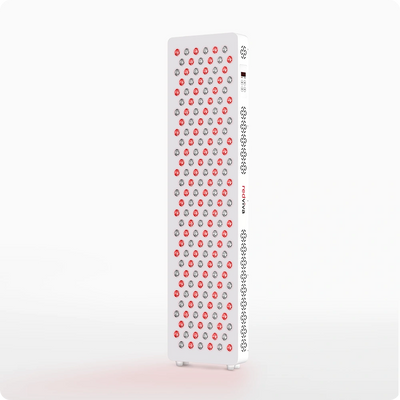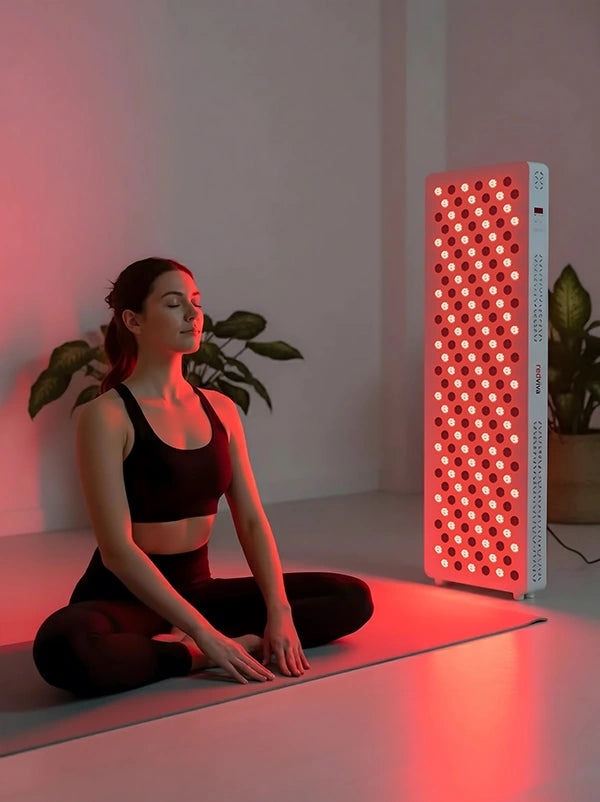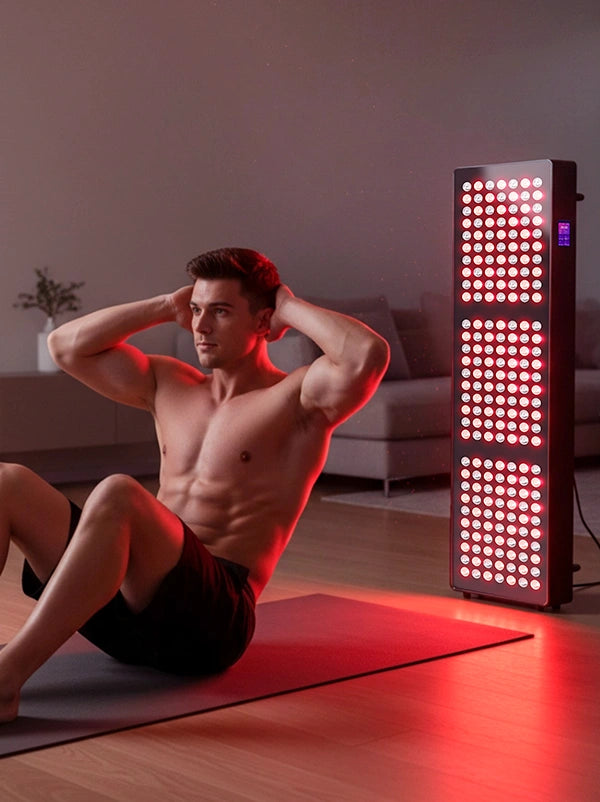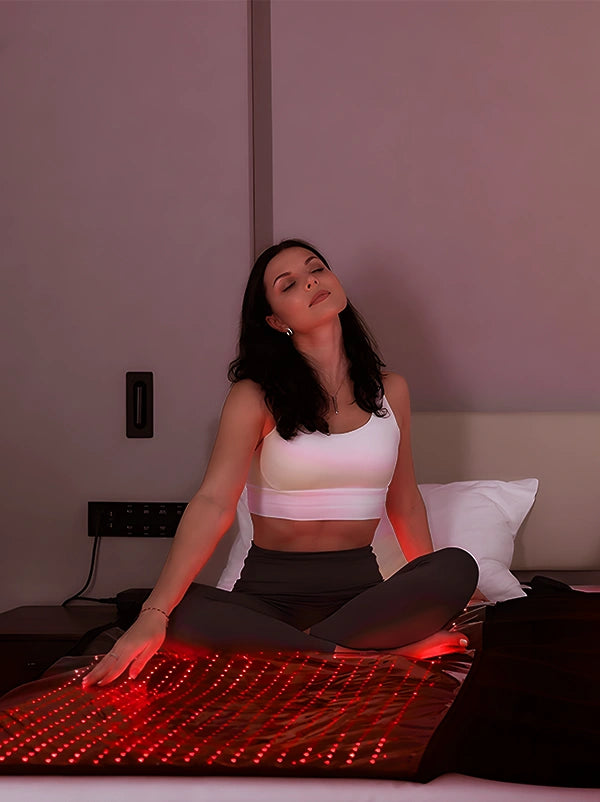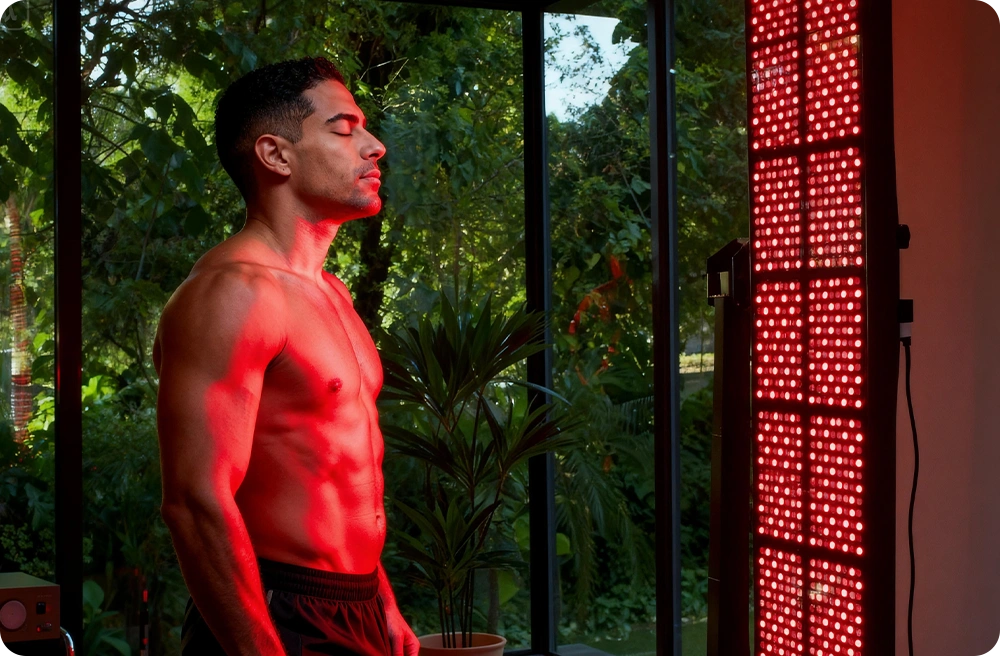
Level Up Your Wellbeing: Red Light Therapy for Men’s Health...
Testosterone decline can creep in earlier than most men realise — affecting performance, confidence, and wellbeing. Red light therapy offers a proven, natural way to support hormone health and reclaim your edge.
Why Redviva is recommended by Wellness Professionals:
✅ Encourages healthy testosterone production at the source
✅ Supports libido and sexual performance
✅ Enhances sperm quality and reproductive health
Support Your Testosterone Naturally

Red light therapy has been shown to stimulate Leydig cells, which are essential for testosterone production. In one clinical study, men using red light therapy on the testes saw testosterone levels increase by up to 200% within a few weeks. Regular use can help combat the natural decline of testosterone, boosting drive, energy, and physical resilience.

Low-level light therapy has been linked to improved circulation and hormonal balance - both key to sexual performance. A 2021 pilot study found that men with low libido reported a nearly 50% improvement in sexual satisfaction after just 2 weeks of red light therapy. Many users notice a renewed sense of confidence and performance with consistent use.

Mitochondria power sperm motility - and red light therapy directly energises these cells. Studies show that photobiomodulation can lead to a significant improvement (up to 70%) in sperm motility and vitality in men with reduced fertility. For those looking to optimise reproductive health, RLT offers a natural edge.
How Redviva Red Light
Therapy Reboots Men’s
Hormonal Health
Targets Hormone- Producing Cells
Unlike supplements that rely on absorption through the gut, Redviva red light therapy directly targets the Leydig cells in the testes- the very cells responsible for testosterone production. Near-infrared wavelengths (e.g. 850nm) penetrate deep enough to reach these structures, delivering focused stimulation where it matters most.
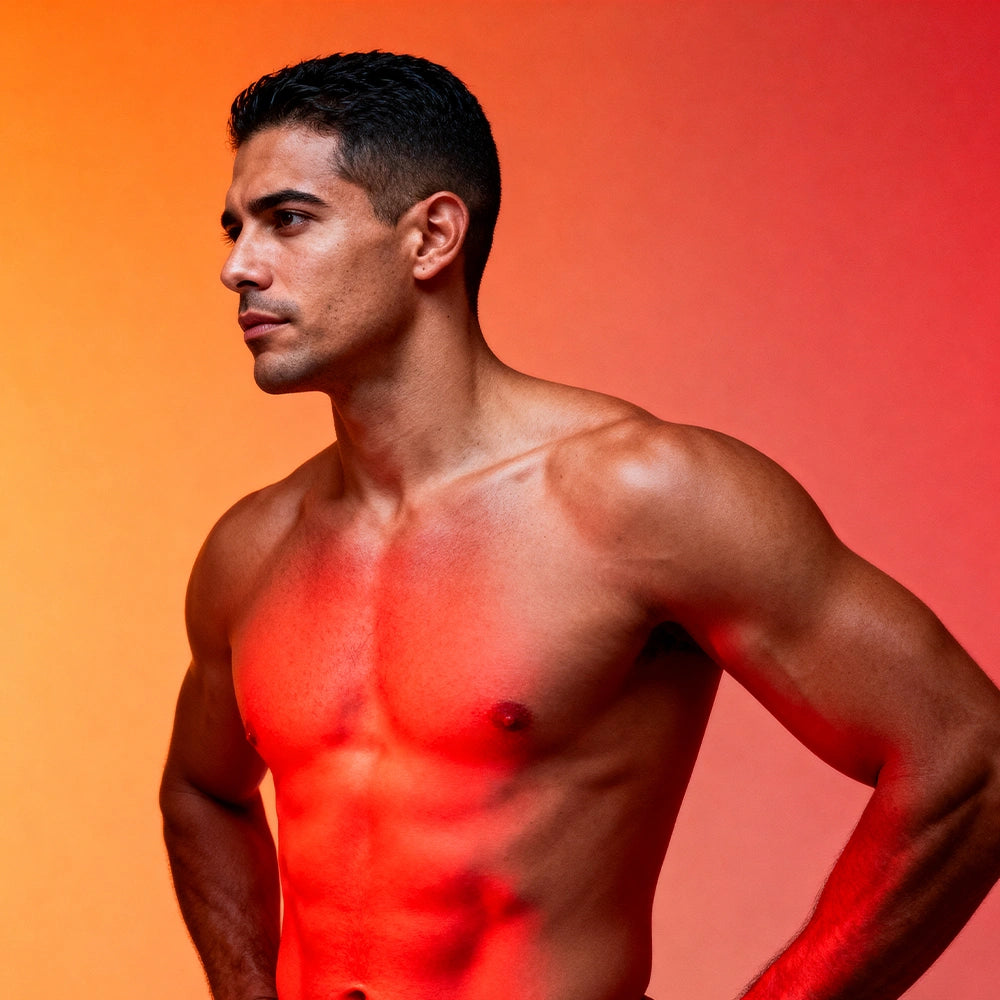
Unlike supplements that rely on absorption through the gut, Redviva red light therapy directly targets the Leydig cells in the testes- the very cells responsible for testosterone production. Near-infrared wavelengths (e.g. 850nm) penetrate deep enough to reach these structures, delivering focused stimulation where it matters most.

Boosts Mitochondrial Energy
Testosterone production is energy-intensive- and mitochondria are the power source. Red light is absorbed by these mitochondria, triggering a surge in ATP (adenosine triphosphate). This fuels vital processes like hormone synthesis, sperm development, and cellular repair, helping your body function at its peak.

Supports Natural Testosterone Function
By energising your hormonal and reproductive systems, red light therapy encourages the body to rebalance itself naturally-without synthetic hormones or side effects. This helps restore healthy libido, optimise fertility, and improve sexual function by improving blood flow, hormone signalling, and testicular health.

Results That Compound Over Time
Like strength training, red light therapy works best with consistency. With regular use, hormone production and sperm quality can improve measurably within weeks, while long-term users often report sustained energy, confidence, and vitality as cellular performance continues to improve.





What else does the science say?
Emerging research into red and near-infrared light therapy reveals compelling benefits for men’s health. Clinical studies have shown improvements in testosterone production, sperm quality, libido, and erectile function. The specific wavelengths used in Redviva panels enhance cellular energy production in tissues critical to male vitality - such as the testes, adrenal glands, and vascular system. As evidence grows, more health professionals are recognising red light therapy as a powerful, drug-free tool to support hormonal health, reproductive function, and overall male wellbeing.
Clinical Study: Red LED Boosts Sperm Motility in Infertile Men
In a preliminary in vitro study by Salama & El-Sawy, semen samples from 27 men (with and without asthenospermia) were exposed to a red LED light (~636 nm). Researchers found significantly increased progressive sperm motility after 2–10 minutes of red-light exposure compared to controls. The motility boost was seen in both washed and unwashed semen, with washed samples showing the greatest improvement. The authors conclude that red LED phototherapy is a promising, safe tool to enhance sperm motility in vitro, potentially improving outcomes in intrauterine insemination (IUI).
Clinical Study: 633 nm Laser Speeds Up Sperm Without DNA Damage
In a 2017 laboratory study (Scientific Reports) by Preece et al., human spermatozoa were exposed to 633 nm red laser light (5.66 mW/cm²). Using computer-assisted tracking, the team observed sperm swam 17–47% faster than untreated sperm, with speed increases evident within 35 minutes of irradiation. Importantly, no significant oxidative DNA damage was detected in the irradiated sperm, indicating the treatment did not harm genetic material. This suggests that red-light photobiomodulation can safely boost sperm motility (a key factor for fertility) without compromising DNA integrity. Notably, 633 nm falls in the Redviva red-light range (~630 nm).
Clinical Study: Light Therapy Elevates Testosterone & Sperm Counts
A 2021 in vivo experiment by Rezaei et al. investigated photobiomodulation in a male infertility model. Thirty-two mice with busulfan-induced testicular damage (azoospermia) received low-level light therapy to the testes at either 0.03 J/cm² or 0.2 J/cm² energy density. The low-dose red/NIR PBM (0.03 J/cm²) produced striking results: it significantly increased serum testosterone levels, boosted the number of spermatogenic cells (indicating higher sperm count), and reduced markers of oxidative stress compared to untreated controls. Treated mice showed improved sperm parameters and fewer apoptotic (dying) cells in the testes. These outcomes suggest that photobiomodulation (using wavelengths in the Redviva range) can support hormone production and spermatogenesis, pointing to a potential therapy for low sperm count or quality.
Clinical Study: NlR Light lmproves Male Sexual Desire and Function
In a double-blind clinical trial (Lasers Surg. Med., 2019) by Cassano et al. (at Harvard/Mass. General Hospital), 20 men with major depression (and associated sexual dysfunction) were given transcranial photobiomodulation or sham treatment. The active group received near-infrared light (~820–830 nm) to the forehead (frontal cortex) twice weekly for 8 weeks. Outcome measures of libido and sexual performance (desire, arousal, orgasm satisfaction) showed significant improvement in the NIR-treated group versus sham. Specifically, sexual function scores improved by an average of ~2.5 points in the NIR group, compared to ~0.5 in controls. This indicates that 830 nm-range NIR therapy enhanced sexual desire and satisfaction, beyond what could be explained by mood improvement alone. The wavelength (~823 nm) lies in the Redviva near-infrared range, highlighting a possible non-pharmacologic option for low libido.
Testimonials
Get Your Light Therapy Device By Your Needs
Boost your confidence at any age, no matter what your health concern is.
Shop NOWMale Health FAQs
How long does it take to see results for testosterone or libido?
Most men begin noticing subtle changes - like improved energy or drive - within 2–4 weeks of consistent use. Clinical studies suggest testosterone levels may increase measurably in as little as 2 months. As with fitness or nutrition, consistency is key to long-term hormonal balance and performance.
Where should l use the red light for testosterone benefits?
To support testosterone production, panels should be directed toward the lower abdomen or groin area - ideally at a distance of 6–12 inches, for around 10–15 minutes per session. This safely stimulates the Leydig cells responsible for natural testosterone production, helping your body work as it should.
Is red light therapy safe for male reproductive health?
Yes — when used correctly, red light therapy is non-invasive, drug-free, and well-tolerated. The wavelengths used in Redviva panels are clinically tested and do not overheat or damage tissue. In fact, studies show improved sperm motility and reproductive function over time, making it a safe and powerful tool for men.
How often should l use Redviva for hormonal support?
For best results, we recommend 4–6 sessions per week. Just 10–15 minutes a day is enough to stimulate testosterone production and promote hormonal balance. Like training or supplementation, regular use delivers stronger and more sustained improvements over time.
Do lneed to be undressed for it to work?
Yes - red and near-infrared light need direct skin exposure to be effective. Clothing blocks the wavelengths from reaching the target tissue, especially when treating areas like the lower abdomen or groin. For hormonal and fertility benefits, skin contact ensures the light reaches the cells responsible for testosterone and sperm production.
lIs there an age where red light therapy stops being effective for testosterone?
While testosterone naturally declines with age, red light therapy can benefit men in their 20s through to their 60s and beyond. Whether you're optimising for performance or restoring balance, the treatment works by supporting your body’s natural systems — no matter your stage of life.
